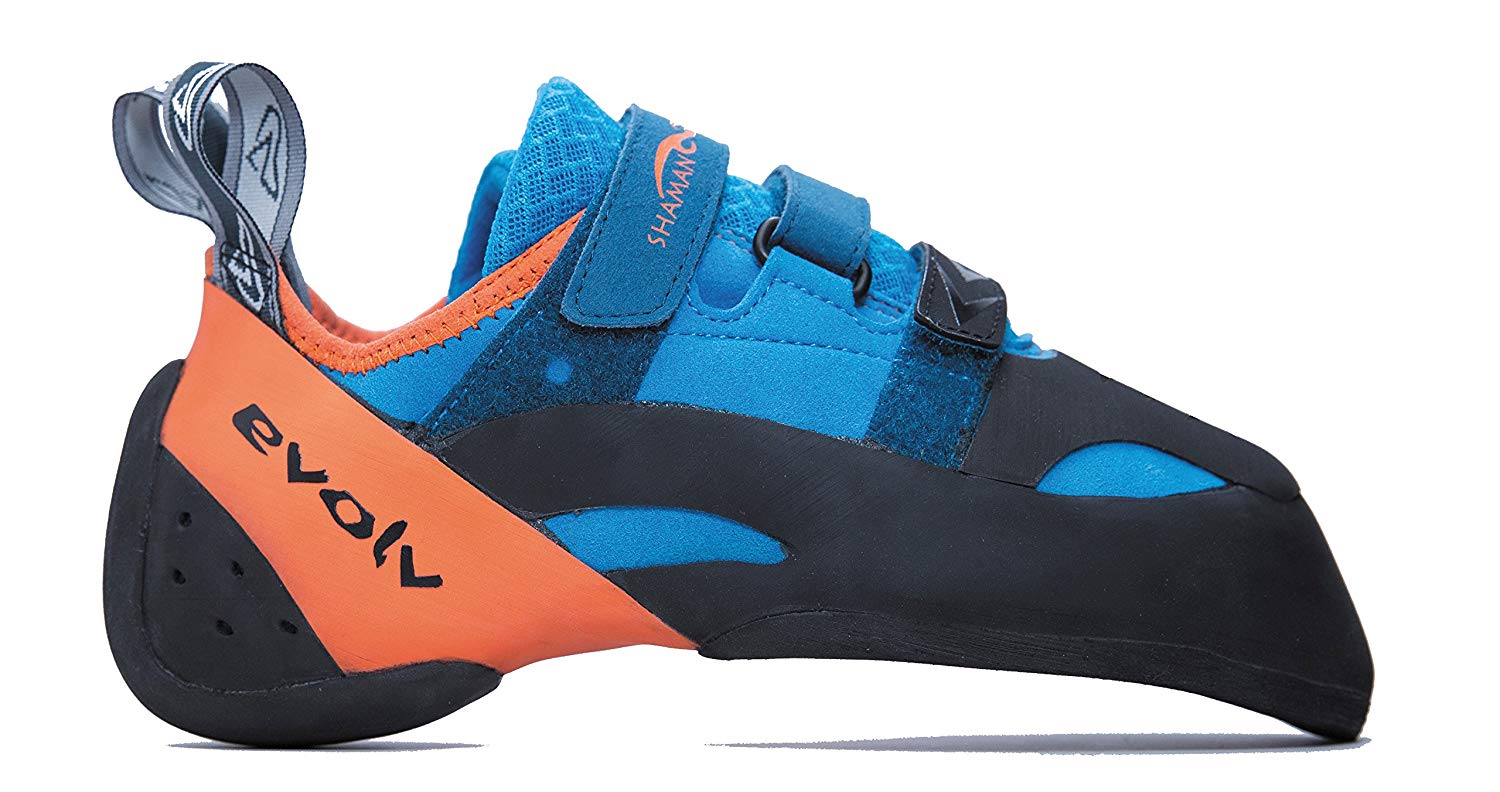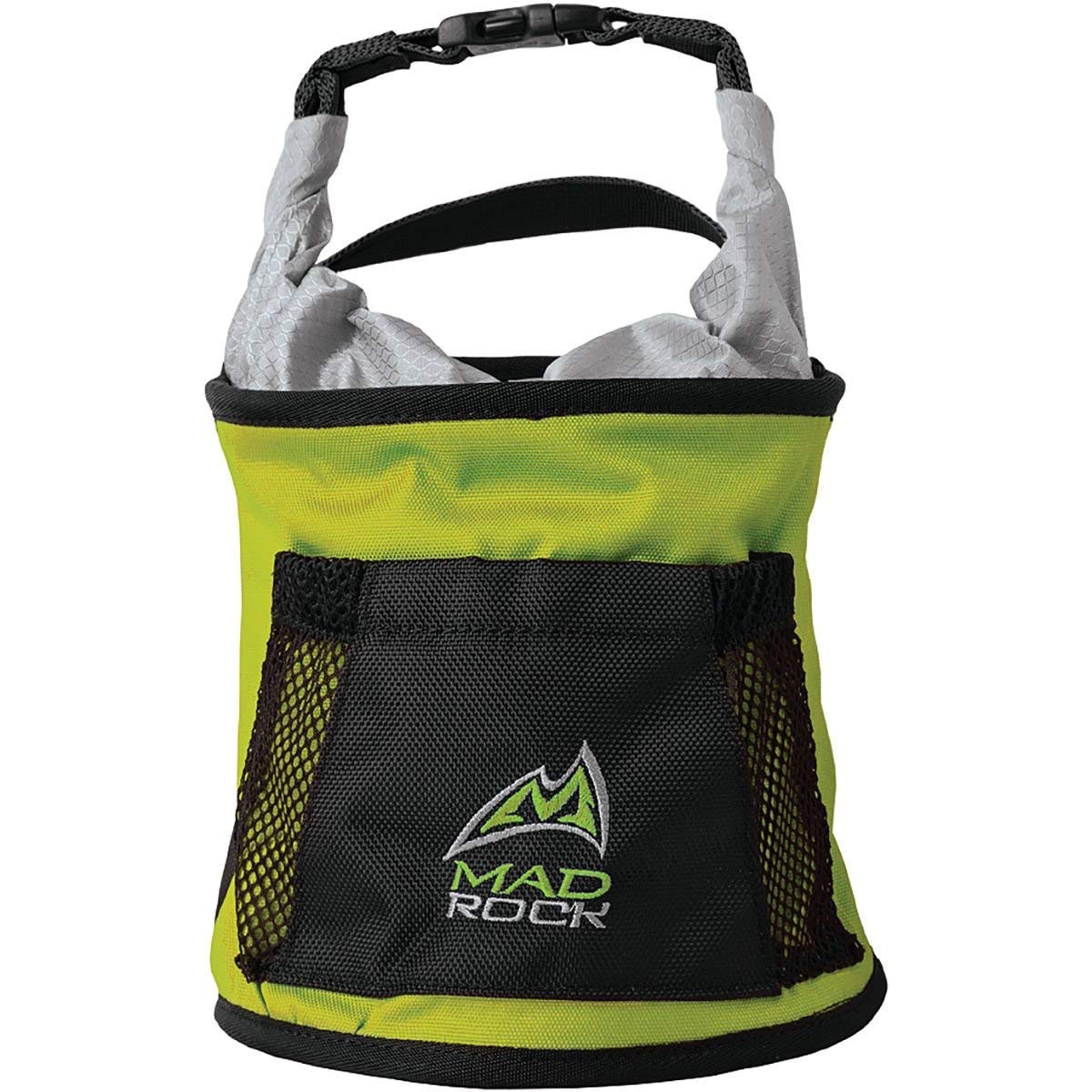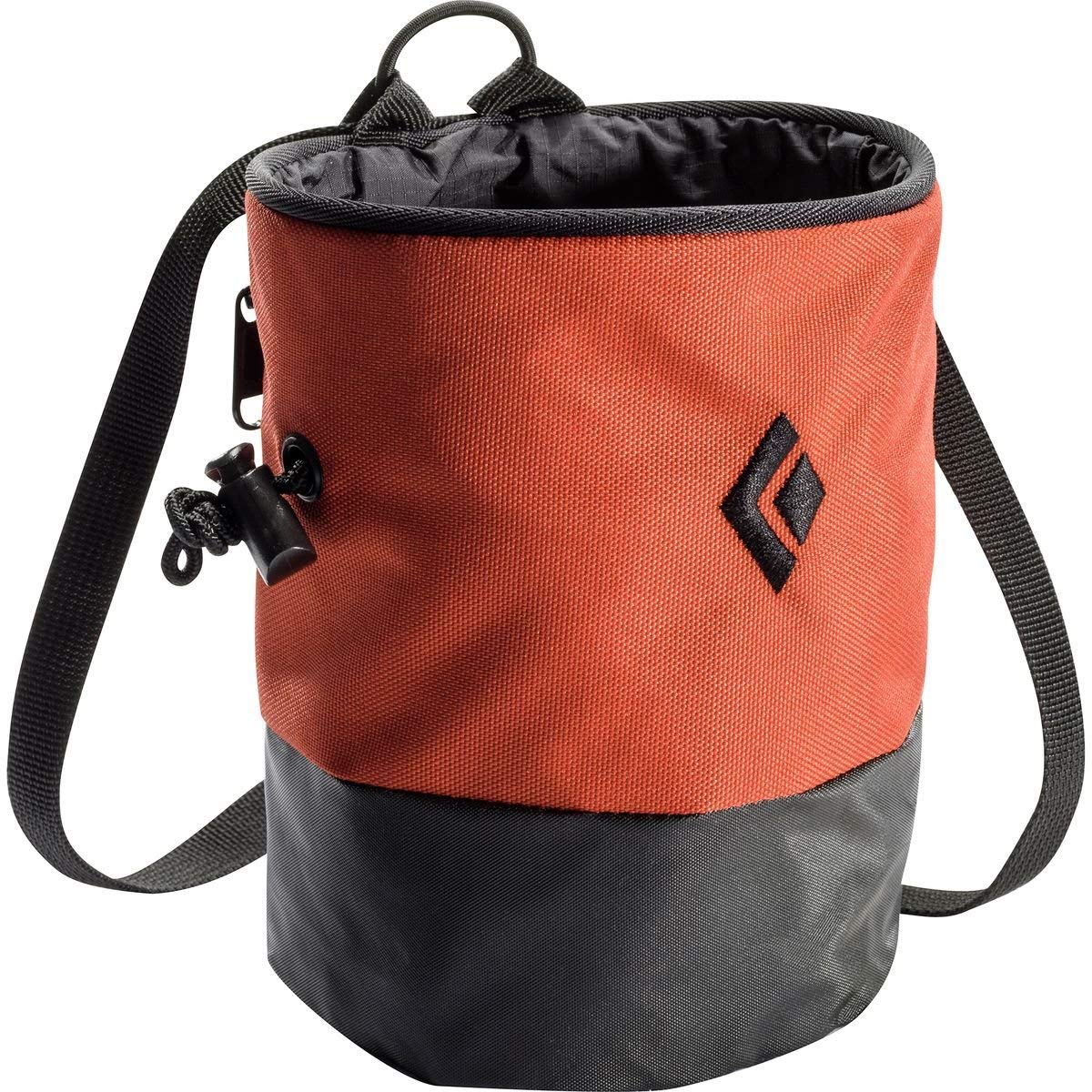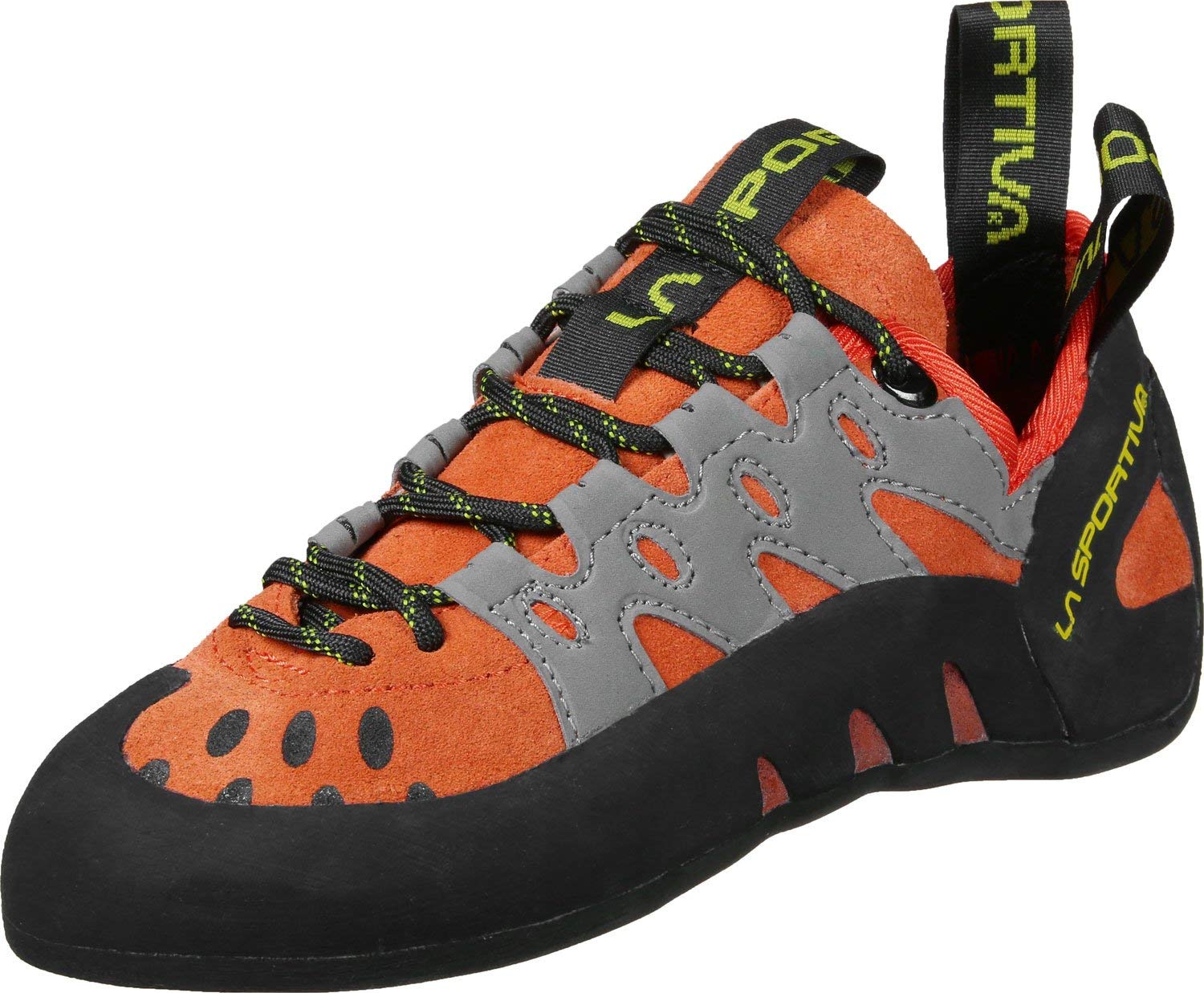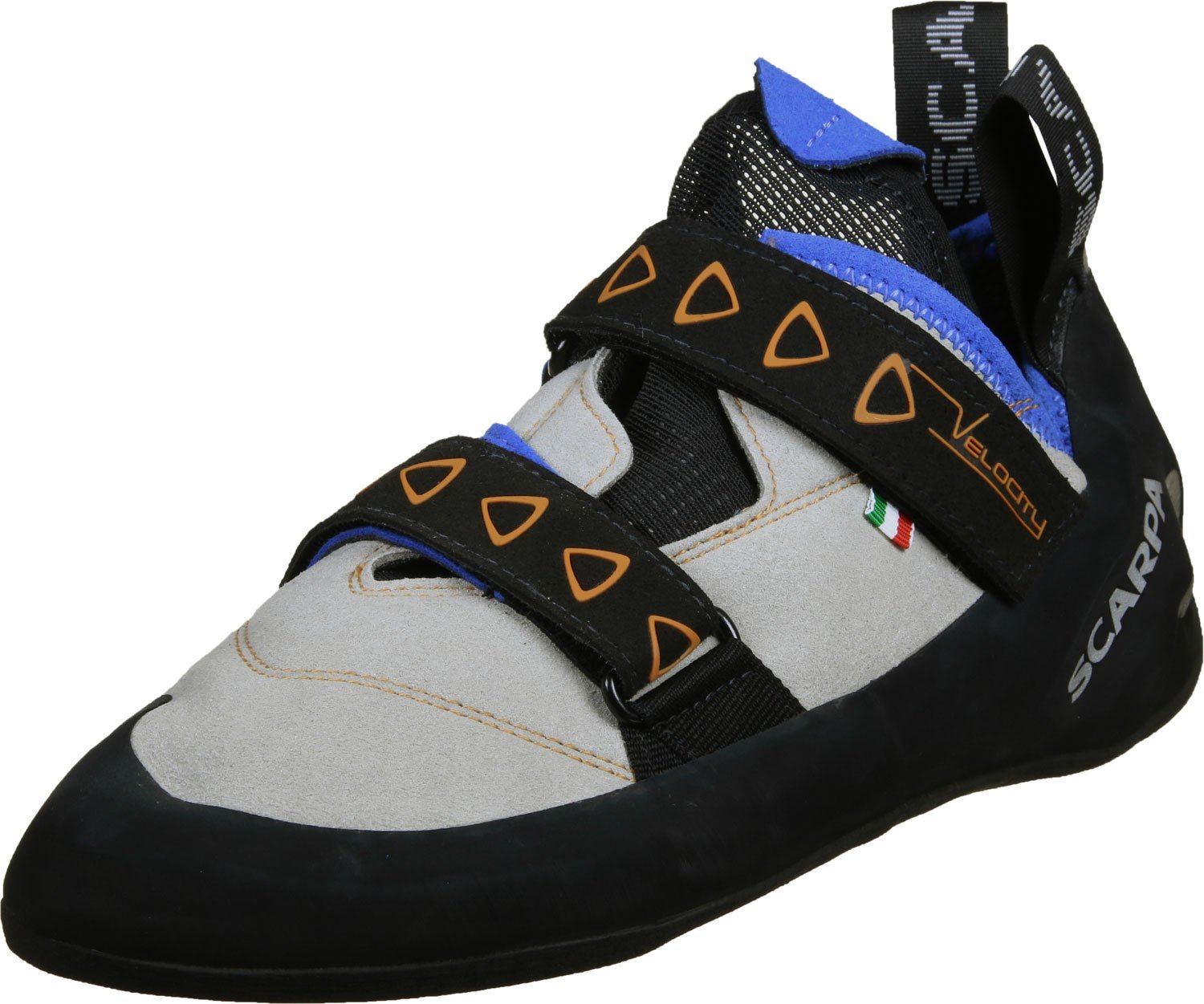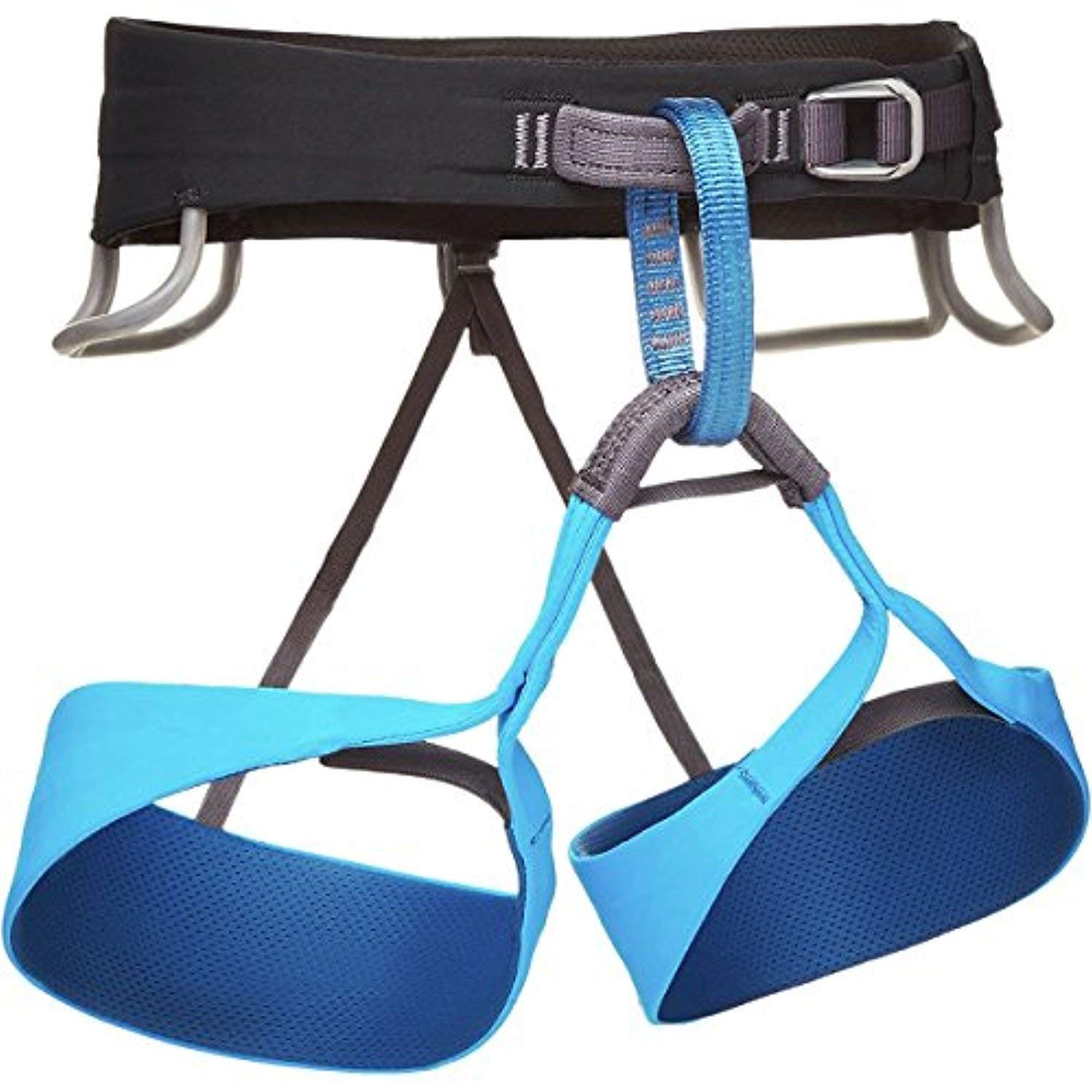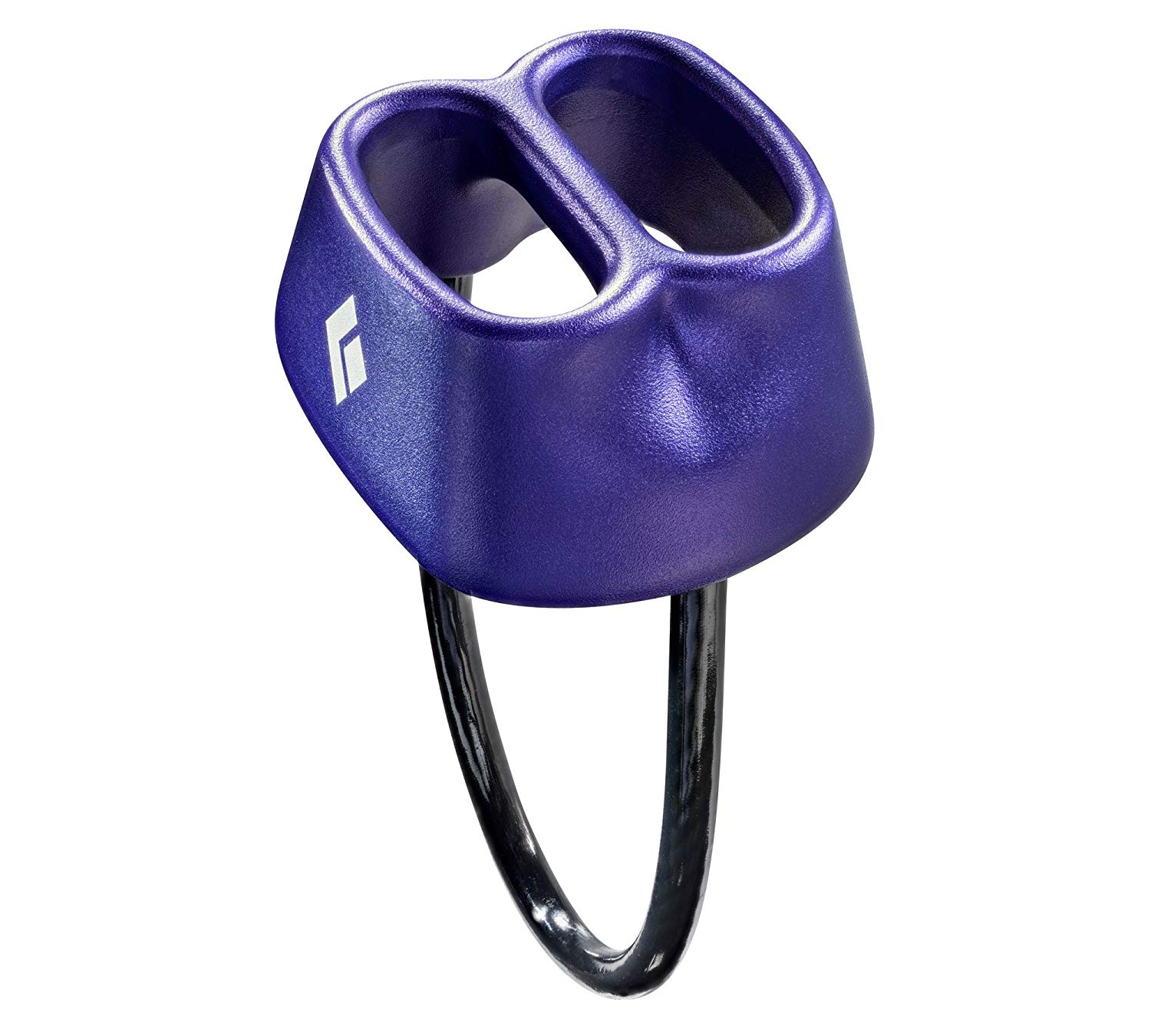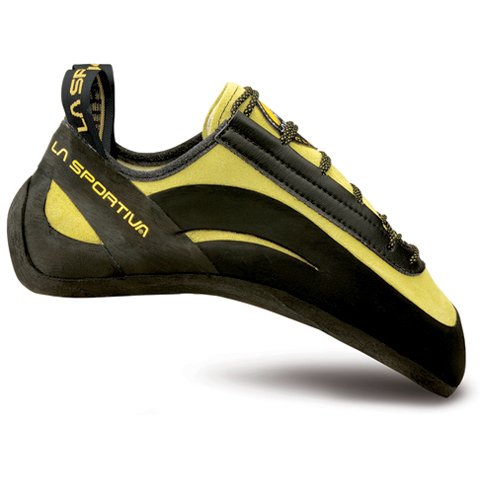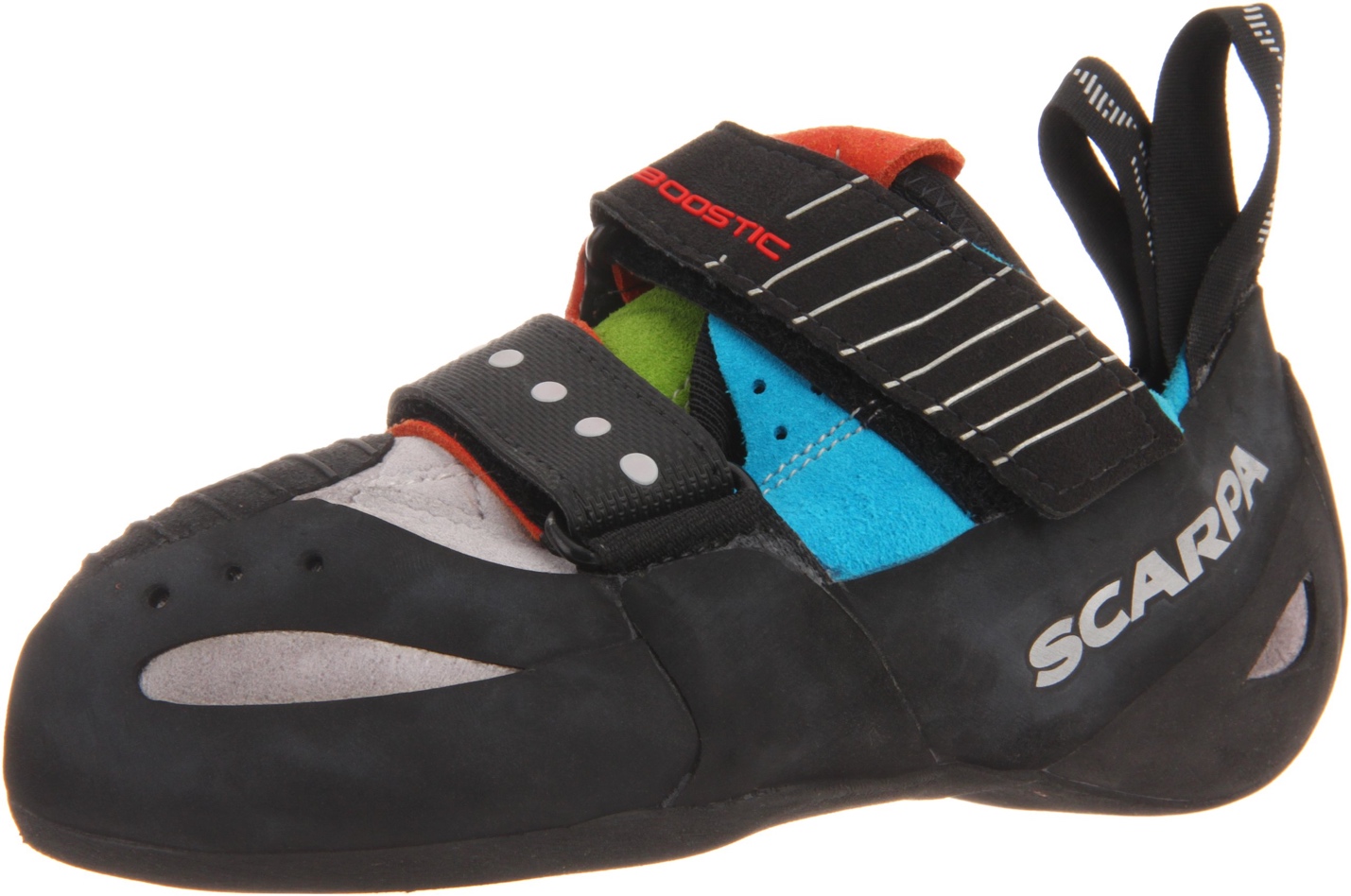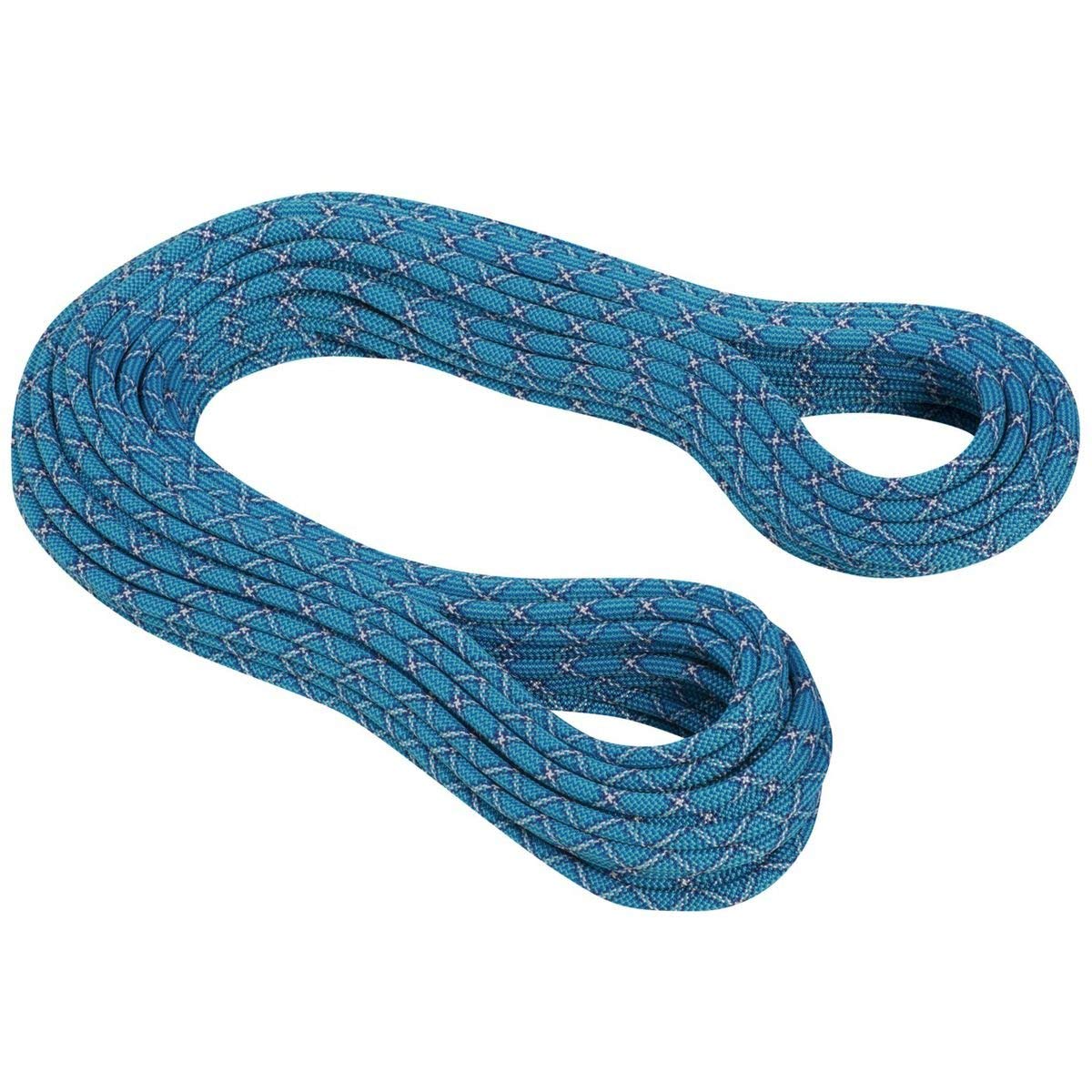Interested in getting into rock climbing? The barrier to entry might seem intimidating when you think about the equipment, training, and travel required.
The truth?
Anyone can start rock climbing - all you need to do is visit your local gym with basic equipment. And while this equipment will cost something, if you're strategic, it won't cost as much as you might think.
Whether you’re interested in bouldering, indoor climbing, or outdoor climbing, we’ve compiled a guide to the essential rock climbing gear for beginners.
Bouldering Gear for Beginners
The best thing about bouldering? You don’t need a belay certification - or a climbing partner to get started.
It’s often how people begin their foray into climbing, as you can dip your toes in without much expense or commitment.
As far as gear goes, a pair of shoes, chalk, and a chalk bag is all you need to get started.
Here’s the bouldering gear beginners will need:
Bouldering Shoes
Climbing shoes are considered by many climbers to be the most important piece of equipment they own.
Proper climbing shoes allow you to edge on tiny holds, hook into pockets, and stick big moves on overhanging routes.
The right climbing shoes can make you a better climber, and while you’ll certainly learn that in general the smaller you size your shoes, the better you will climb, comfort is still important, especially in the beginning.
There’s nothing worse than uncomfortable climbing shoes to deter you from the sport. Here are some quality options:
Best for Narrow Feet: La Sportiva Solution
The Solutions are a popular bouldering shoe - which makes sense because the company designed them specifically for this purpose.
The downturned shape is ideal on overhung terrain and the rubber toe and heel makes it great for hooking.
La Sportiva uses Vibram XS Grip2 rubber, which is soft and forgiving and will help you stick to anything. The Solutions cost $180/£140.
Best for Wide Feet: Evolv Shaman
In general, the width of your foot determines how well a climbing shoe will fit, and as a beginner, this is all you need to worry about until you’ve developed more knowledge about the technology behind climbing shoes (lace vs Velcro closure, downturned vs flat shape, ect.).
La Sportiva typically fits climbers with narrower feet, while brands like Evolv tend to run wider.
The Shaman is a great choice for boulderers because it edges and hooks well, and in addition is comfortable enough to wear for an entire session - given you size it right. $160/£125 is a fair price to pay for shoes designed by the legendary climber Chris Sharma.
Chalk Bag
While not all climbers use chalk, the majority do.
If you notice your fingers and hands slipping on holds, try chalking up. Chalk will give you a better grip on the rock and if you’re using chalk, you’ll need a chalk bag to carry it.
Bouldering-specific chalk bags are called ‘buckets’ and are meant to sit on the ground for use in between routes. The advantage to this is less refilling and the ability to chalk up both hands at once.
Alternatively, some boulderers prefer to wear general climbing chalk bags, which are smaller and attach around your waist with a cord or a buckle. You can even attach it to the back of your harness with a carabiner if you choose to try roped climbing.
Chalk ‘Bucket’: Mad Rock Chalk Pot
This popular chalk pot offers a roll-top design that provides for a secure closure system - and less mess.
There are brush holders and a mesh pouch to hold additional items, as well. The Mad Rock Chalk Pot costs $25/£20.
Chalk Bag: Black Diamond Mojo Zip
Black Diamond is committed to designing quality climbing gear - and its chalk bags are no exception.
The Mojo Zip is classically shaped and reinforced with a TPU lower. Many climbers enjoy the quick release buckle, which allows for easy attachment and removal.
There is a brush holder and an additional storage pouch. The Mojo Zip retails for $20/£16.
Chalk
Chalk is what you pour into your chalk bag and use on your hands to absorb sweat while you’re climbing. It can help you improve your grip, and while not all climbing chalk is created equal, as a beginner you don’t need to spend an arm and a leg on the highest end brand.
Best Chalk for Beginners: Trango Gunpowder
This chalk is one of the finer types on the market, which means it will effectively coat your hands. The primary component is magnesium carbonate. A 200 gram container of Tango Gunpowder chalk costs $7.50/£6.
Indoor Climbing Gear for Beginners
If you’re starting out in the gym and want to climb higher than the bouldering wall, top roping is where you’ll begin.
While top roping requires more gear, skills, and a partner (or an auto-belay - in which case the amount of routes you can climb will likely be limited) it can be a ton of fun as it can help you overcome any fear you might have of heights, meet new people, and start learning basic climbing movements.
The best part? If you’ve already purchased climbing shoes and chalk for bouldering, you can use what you already have. If not, we’ll make some new shoe suggestions for those solely interested in top-roping.
Here’s the gear you need to start climbing indoors:
Climbing Shoes
Best for Narrow Feet: La Sportiva Tarantulace
The Tarantulace is a popular all-around shoe with a flat sole that allows your feet to stay comfortable during an entire climbing session, if you don’t size them too tightly.
The upper is a mix of leather and synthetic, meaning it will stretch a little over time, which you should take into consideration when sizing.
If you prefer Velcro closure over laces, try the La Sportiva Tarantulas, which are pretty much the same shoe with a different closure system.
The Tarantulace cost $80/£62 - which is more affordable than our bouldering picks, intentionally selected because you have to buy more gear for roped climbing.
Best for Wide Feet: Scarpa Vapor V
While La Sportiva primarily caters to narrower feet, Scarpa designs shoes that typically fit those with wider feet.
The Vapor V offers a great combination of comfort and technical prowess. The most recent iteration integrated extra rubber into the upper for improved toe hooking capability.
These serve as a do-it-all kind of shoe, so size them according to your needs. It’s important to note they’ll require some breaking in time. The $165/£125 price tag might seem a bit steep, but these shoes are crafted to last.
Climbing Harness
Unlike when you’re bouldering, you have to wear a harness to attach yourself to the rope, belay your partner, and carry necessary gear.
A beginner’s climbing harness doesn’t need to be fancy, super lightweight, or specialized - comfort is key.
Best Climbing Harness for Beginners: Black Diamond Solution
The Solution provides for everything you need in a climbing harness at an affordable price.
It’s also super comfortable, thanks to the company’s proprietary Fusion technology.
An auto-locking waist belt and adjustable leg loops let you adjust the fit for your body. There are four gear loops for hanging your belay device and any other equipment you want to carry.
The Solution costs $70/£55.
Belay Device
There’s a lot of industry debate about what kind of belay device is best for a beginner, usually between standard tubular and newer assisted braking devices, such as the Petzl GriGri.
I personally think that all climbers should learn to use a tubular device - commonly known as an ATC - before upgrading to an assisted braking device, even on account of the extra safety reassurance an assisted braking device provides.
There is no substitute for proper belay technique and this is best learned by using an ATC, which requires you to focus entirely on the climber while belaying.
Best Belay Device for Beginners: Black Diamond ATC
This basic belay device is popular, effective, and reliable. It provides for easy rope handling and dissipates heat while lowering a climber. An ATC is also affordable at only $18/£14.
Locking Carabiner
Your belay device is attached to your harness with a locking carabiner. You can’t just use any kind of carabiner - it needs to be pear shaped, specifically meant for belaying/rappelling, and feature a locking mechanism.
Best Locking Carabiner for Beginners: Black Diamond Rocklock Screwgate
This large carabiner is ideal for beginners learning to belay. The key-lock nose provides for snag-free clipping while a square hinge helps hold your belay device in place. The locking feature is easy to use and it’s affordable at only $12/£9.
Chalk Bag
Best Chalk Bag for Indoor Climbing: Metolius Yosemite
The Metolius Yosemite is a great chalk bag for beginner climbers in the gym.
It provides plenty of access and can hold a decent volume of chalk. The stiff rim means you won’t have to go digging around with your fingers while you’re on a route, and the product includes a belt with a side-release buckle. It costs $15/£12.
Outdoor Climbing Gear for Beginners
When you’re ready to head outside to climb, you’re going to need to buy more gear.
You’ll start out top-roping - which means you’re going to need to buy your own climbing rope.
In addition, climbing outside is inherently more dangerous than climbing in a gym - and a helmet is a must!
Also, climbing outdoors will wear out your climbing shoes faster than in the gym, so while you can absolutely use your indoor shoes, we’re going to make a few more durable suggestions.
The rest of the gear you bought for indoor climbing - including your harness, belay device, carabiner, chalk, and chalk bag - will work great for top-roping outdoors, and even for when you start sport climbing.
Note: It’s important that you first climb outside as part of a class, with a guide, or an experienced partner. For the purpose of this article, we’re assuming you haven’t yet developed skills like setting up a top-rope anchor, and therefore will not include the necessary equipment for that in this particular piece.
Climbing Shoes
Best for Narrow Feet: La Sportiva Muiras
These popular shoes have been around for more than a decade - and for good reason.
The Muiras are an upgrade from the Tarantulace in terms of technicality and will help you advance your climbing skills. They’re also designed to handle the outdoor elements.
The lace-up closure means you can adjust the fit. At $165/£127, they’re not the cheapest shoes on the market, but if you’re climbing outdoors, then you’re getting serious about climbing, which means you’re going to need to increase your budget.
Best for Wide Feet: Scarpa Boostic
The Boostic is a much more aggressive shoe than our indoor climbing pick and will help you ascend more technical routes while providing comfort for those with wider feet.
The asymmetrical toe box will help you move up the grades.
Velcro straps make for easy taking on and off, which is ideal if you size them tightly and want to give your feet a rest in between climbs. Sticky, Vibram XS rubber is complimented by a toe patch for hooking.
The Scarpa Boostic costs $180/£140.
Climbing Rope
Buying your first climbing rope is an exciting step. It means you’re getting serious about the sport.
There are different climbing rope lengths, widths, and features that we could spend a whole article writing about it, but for beginners just climbing their first routes outside, we’re going to focus on two things: dry treatment and length.
Climbing outside exposes your rope to the elements, unlike in the gym. It’s recommended that you purchase a dry-treated climbing rope for this reason.
Dry treatment prevents the rope from getting wet and heavy - which in turn makes it less able to withstand the forces generated in a fall.
For beginners, a 60m length is a good standard length. While 50m ropes are sufficient for shorter climbs, buying a 60m rope will allow you to pursue bigger goals when you’re ready.
A 9.5mm rope is a good width for all-around use. Ropes that are 9.4mm and smaller are designed for lightweight use and are not rated to hold as many falls, while burly, 10mm ropes are unnecessarily heavy for a beginner.
A range of 9.5-9.9 is ideal.
Best Climbing Rope for Beginners: Mammut Infinity 9.5 Dry
Mammut is one of the leading rope designers in the business.
The Infinity is a popular, reliable rope that runs smoothly between your fingers and belay device. The dry treatment provides for protection from the elements and helps mitigate abrasion.
The Infinity comes in two different styles - a duodess bi-pattern design or a single color with a well-defined middle marker.
$240/£185 might seem like a lot to pay, but remember that your climbing rope is your lifeline, and will last you years if you take care of it.
Climbing Helmet
If you’re going to skimp on gear, don’t skimp on protection for your head. When climbing outdoors, there are more risks to consider, including rock fall.
A basic climbing helmet is affordable, and wearing one while climbing outdoors is a great habit to develop.
Best Climbing Helmet for Beginners: Black Diamond Half Dome
The Half Dome is the perfect helmet for beginners as it provides for a full range of protection and is super adjustable thanks to the click-wheel adjustment system. It’s secure and easily holds a headlamp in case you get caught out at night.
At $60/£46, it’s also one of the most affordable options on the market.
How Much Does it Cost to Start Rock Climbing?
Cost is one of the primary concerns for beginners getting into rock climbing.
Rest assured, beginner climbing gear won’t cost you a fortune - and once you start building a collection of gear, it will last for years, as long as you take care of it.
Let’s look at our beginner rock climbing gear list with prices and add up the totals for each style of climbing.
Beginner Rock Climbing Gear List
| Type of Climbing | Gear You Need | Cost | Total |
|---|---|---|---|
| Bouldering | Shoes | $160-$180 | |
| Chalk Bag | $20-$25 | ||
| Chalk | $7.50 | ||
| $187.50 - $212.50 | |||
| Indoor Rock Climbing | Shoes | $80-$100 | |
| Harness | $70 | ||
| Belay Device | $18 | ||
| Locking Carabiner | $12 | ||
| Chalk | $7.50 | ||
| Chalk Bag | $15 | ||
| $202.50 - $222.50 | |||
| Outdoor Rock Climbing | Shoes | $165-$180 | |
| Harness | $70 | ||
| Chalk | $7.50 | ||
| Chalk Bag | $15 | ||
| Rope | $240 | ||
| Helmet | $60 | ||
| Belay Device | $18 | ||
| Locking Carabiner | $12 | ||
| $587.50 - $602.50 |
The cost of rock climbing gear might be deterring you from getting into the sport - but it shouldn’t.
You can rent gear from your climbing gym for a fee if you’re not ready to buy yet, but once you start climbing, you’ll quickly realize having your own gear is ideal.
You’ll want shoes that will help you excel rather than feel sloppy, a harness that fits you just right, and your own belay device so you won’t always have to borrow your partner’s.
Whether you want to start bouldering, indoor climbing, or outdoor climbing, it will only cost you a couple hundred dollars/pounds in total.
Bouldering is the cheapest form of climbing for beginners while outdoor climbing is more expensive - but remember, much of the gear you buy for one purpose will work for another, and vice versa.
So, what are you waiting for? Head to the climbing gym closest to you and give rock climbing a try!

